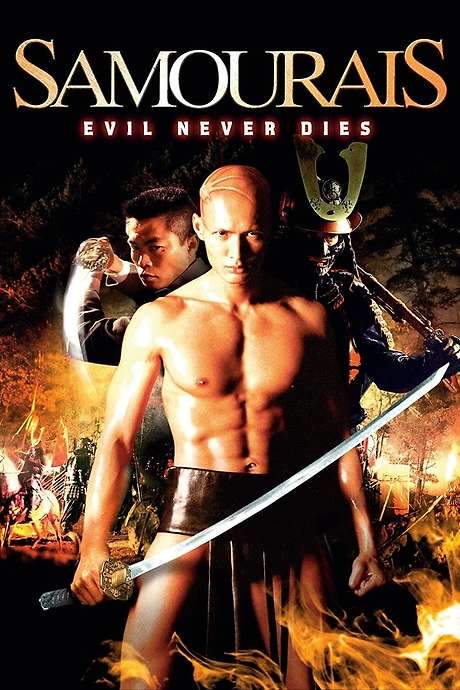
Samurai Reincarnation
Year: 1981
Runtime: 122 mins
Language: Japanese
Director: Kinji Fukasaku
After surviving a 350‑year‑old massacre of Christians, a disillusioned samurai denounces God for ignoring the faithful. He bargains his soul to Satan, gaining the ability to raise the dead. With an undead army at his command, he embarks on a murderous rampage.
Warning: spoilers below!
Haven’t seen Samurai Reincarnation yet? This summary contains major spoilers. Bookmark the page, watch the movie, and come back for the full breakdown. If you're ready, scroll on and relive the story!
Timeline & Setting – Samurai Reincarnation (1981)
Explore the full timeline and setting of Samurai Reincarnation (1981). Follow every major event in chronological order and see how the environment shapes the story, characters, and dramatic tension.
Last Updated: October 04, 2025 at 12:44
Main Characters – Samurai Reincarnation (1981)
Meet the key characters of Samurai Reincarnation (1981), with detailed profiles, motivations, and roles in the plot. Understand their emotional journeys and what they reveal about the film’s deeper themes.
Last Updated: October 04, 2025 at 12:44
Major Themes – Samurai Reincarnation (1981)
Explore the central themes of Samurai Reincarnation (1981), from psychological, social, and emotional dimensions to philosophical messages. Understand what the film is really saying beneath the surface.
Last Updated: October 04, 2025 at 12:44
Unlock the Full Story of Samurai Reincarnation
Don't stop at just watching — explore Samurai Reincarnation in full detail. From the complete plot summary and scene-by-scene timeline to character breakdowns, thematic analysis, and a deep dive into the ending — every page helps you truly understand what Samurai Reincarnation is all about. Plus, discover what's next after the movie.
Samurai Reincarnation Summary
Read a complete plot summary of Samurai Reincarnation, including all key story points, character arcs, and turning points. This in-depth recap is ideal for understanding the narrative structure or reviewing what happened in the movie.

Similar Movies to Samurai Reincarnation
Discover movies like Samurai Reincarnation that share similar genres, themes, and storytelling elements. Whether you’re drawn to the atmosphere, character arcs, or plot structure, these curated recommendations will help you explore more films you’ll love.
Explore More About Movie Samurai Reincarnation
Samurai Reincarnation (1981) Plot Summary & Movie Recap
Samurai Reincarnation (1981) Scene-by-Scene Movie Timeline
Samurai Reincarnation (1981) Spoiler-Free Summary & Key Flow
Movies Like Samurai Reincarnation – Similar Titles You’ll Enjoy
Samurai Resurrection (2003) Detailed Story Recap
Samouraïs (2002) Full Summary & Key Details
Samurai Priest Vampire Hunter (2023) Complete Plot Breakdown
G.I. Samurai (1979) Story Summary & Characters
Black Samurai (1976) Ending Explained & Film Insights
Samurai Spy (1965) Film Overview & Timeline
American Samurai (1992) Spoiler-Packed Plot Recap
Haunted Samurai (1970) Ending Explained & Film Insights
Reborn from Hell: Samurai Armageddon (1996) Story Summary & Characters
Samurai Princess (2009) Spoiler-Packed Plot Recap
Samurai Assassin (1965) Detailed Story Recap
Reborn from Hell II: Jubei’s Revenge (1996) Story Summary & Characters
Samurai Zombie (2008) Story Summary & Characters
Samurai Wolf (1966) Full Summary & Key Details
Samurai Avenger: The Blind Wolf (2009) Ending Explained & Film Insights

















